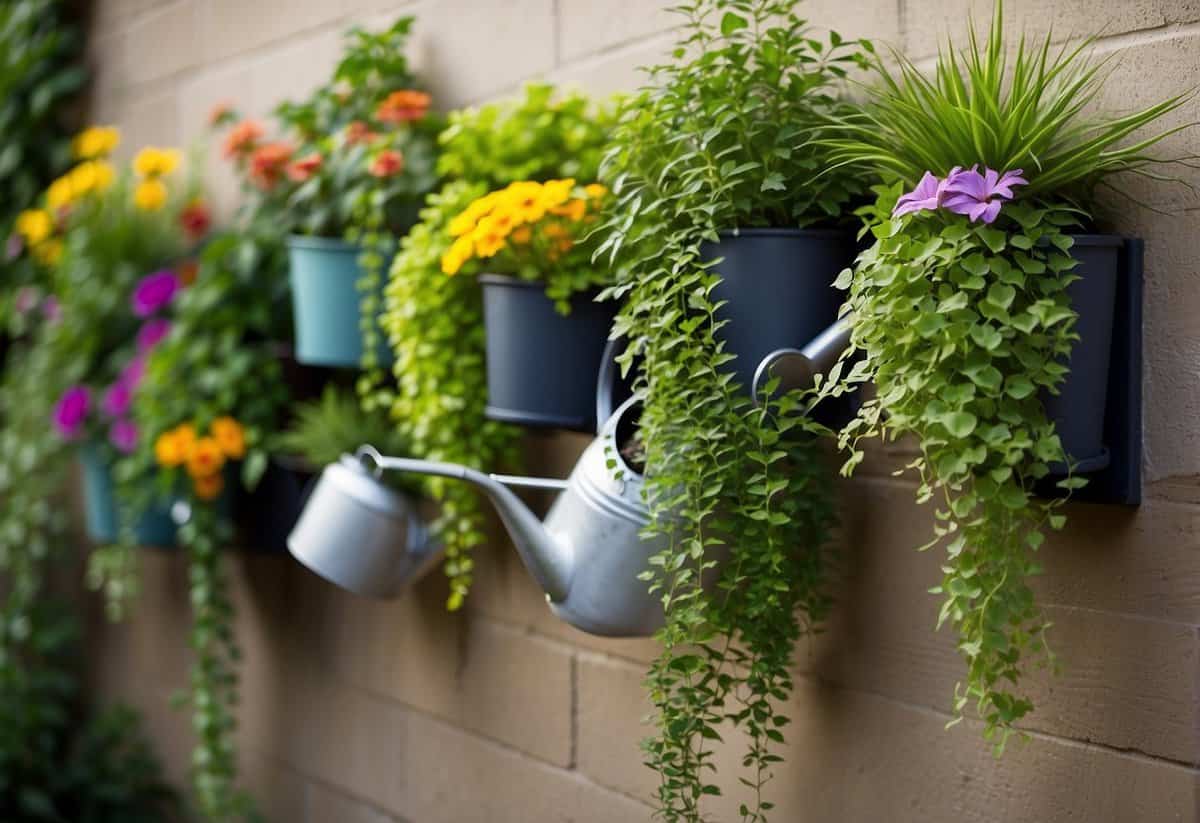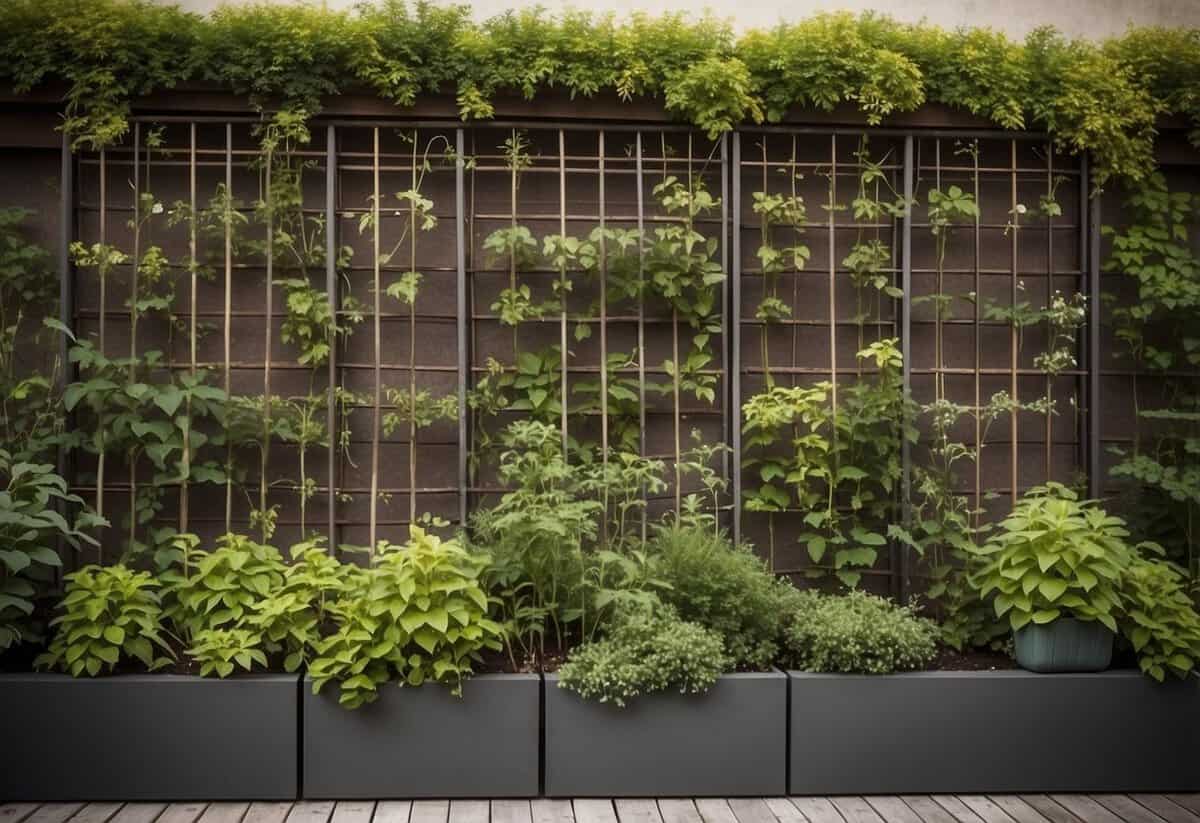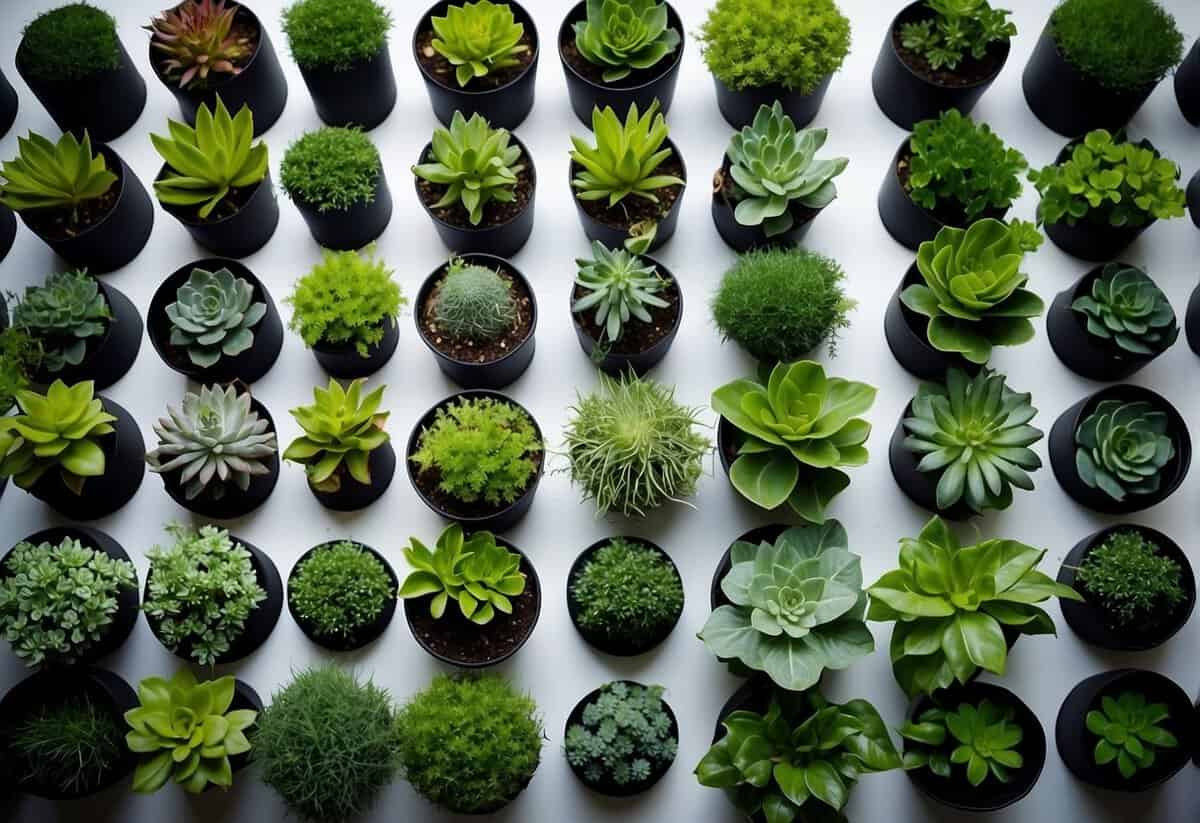Tips for Vertical Gardening: Easy Ideas to Maximize Space
Setting up a vertical garden is a great way to make the most of your gardening space. Whether you have a small yard or just a balcony, you can create a lush and productive garden that climbs up instead of spreading out. This can be especially helpful if you’re living in an urban area or have limited outdoor space.

Why should you consider vertical gardening? It’s not only a space-saver but also an effective method to keep your plants healthier and easier to manage. By growing upwards, you can reduce problems with pests and diseases that often come with ground-level gardening.
1) Choose the right soil mix

Selecting the best soil mix is crucial for your vertical garden’s success. Opt for a lightweight soil mix to protect your structure. Potting soil is a great choice because it is lighter than garden soil and reduces strain.
Make sure the soil is well-draining and nutrient-rich. A soilless mix designed for container gardening can work well. This type of mix will help prevent disease by ensuring good air flow and moisture retention.
2) Start with easy-to-grow plants

Starting with easy-to-grow plants can make your vertical gardening experience enjoyable and successful.
Herbs like mint and basil are great choices. They grow quickly and don’t require much care.
Leafy greens such as lettuce and spinach are also ideal. They thrive in vertical gardens and you’ll have fresh salads often.
Climbing vegetables like beans and tomatoes are excellent too. They grow vertically naturally, saving you space.
3) Use Vertical Planters or Shelves

Vertical planters or shelves are perfect for making the most of your space. You can put these on walls, fences, or even doors.
These setups are great for growing herbs, flowers, and small vegetables. For example, a shoe organizer planter can hold many small plants indoors, like in your kitchen.
You can also buy fabric gardening pockets online and attach them to any wall. This makes it easy to have a garden even if you don’t have much room.
4) Install a Sturdy Trellis

A sturdy trellis is essential for vertical gardening. It supports climbing plants like beans, cucumbers, and tomatoes.
Make sure to choose the right materials. Options include wood, metal, or plastic. Each has its own benefits. For example, wood is natural and blends well with gardens.
Secure the trellis firmly to the ground or a wall. This prevents it from tipping over. Proper installation helps your plants grow tall and healthy.
5) Opt for self-watering containers

Self-watering containers make gardening simpler and more enjoyable. These containers have a built-in system that ensures your plants get the right amount of water without constant attention.
They are perfect for busy gardeners who may not have time to water regularly. Using self-watering containers can also help conserve water, making them an eco-friendly choice.
You can use them both indoors and outdoors. Whether you want to grow herbs in your kitchen or flowers on your patio, self-watering containers are a handy option. The BlueSkyGrow planter is a great example, allowing automatic water dripping from top to bottom.
6) Ensure Sufficient Sunlight

Place your vertical garden in a spot that gets plenty of sunlight. Aim for a location with at least six hours of direct sunlight each day.
South-facing walls are ideal because they receive the most sun. If natural light is limited, consider using artificial grow lights to help your plants thrive.
Different plants have different light needs. Remember to research which plants work best with the amount of sunlight your chosen spot receives.
7) Regularly Prune and Trim Plants

Regular pruning is essential for vertical gardening. It helps prevent disease, enhance airflow, and keep your garden looking neat.
Trim any dead or yellow leaves and remove any overgrown branches. This allows sunlight to reach all parts of the plant.
Pruned plants are healthier and can produce more flowers and fruits. It also helps you spot any issues early, like pests or nutrient problems.
For more detailed advice on pruning, visit Vertical Garden Maintenance & Care Tips.
8) Rotate Plants for Even Growth

To ensure your plants receive the right amount of light, it’s helpful to rotate them regularly. This prevents one side from getting too much sun while another side stays in the shade.
By rotating pots or containers every few days, you promote balanced growth. This simple step helps plants grow straight and healthy, avoiding lean or uneven development.
9) Incorporate vertical hydroponics

Vertical hydroponics is a space-saving way to grow plants indoors. Using a nutrient solution instead of soil, your plants get everything they need while taking up less room. This method is great for small spaces.
You can easily maintain your vertical hydroponic garden by monitoring pH levels and keeping the nutrient solution topped up. Keep an eye on water levels and cleanliness to ensure your system runs smoothly. Regularly check for algae growth and adjust nutrients as needed.
This technique is efficient and visually appealing, perfect for those who want to garden indoors year-round.
10) Utilize Hanging Baskets

Hanging baskets are perfect for small spaces. They allow you to grow plants vertically, making use of every inch.
You can hang these baskets on balconies, patios, or even inside your home. They create a lush, green wall that adds beauty and greenery.
Choose plants that spill over the edge, like strawberries or trailing vines, for a stunning effect.
Benefits Of Vertical Gardening

Vertical gardening has numerous advantages that include saving space, making maintenance easier, and improving the look of your garden. Each benefit helps make gardening more enjoyable and effective.
Space Efficiency
One major benefit of vertical gardening is the efficient use of space. Traditional gardens require large patches of land, but vertical gardens can thrive in much smaller areas. By growing plants vertically, you can maximize the use of limited space, whether it’s a small backyard, a balcony, or even an indoor wall.
Using trellises, shelves, or hanging pots, you can grow more plants in a confined area. This is especially helpful for those living in urban settings where outside space is scarce. Crops like tomatoes, cucumbers, and beans are perfect for vertical gardening as they naturally climb and spread.
Easier Maintenance
Vertical gardening can also make caring for your plants simpler. When plants grow vertically, they are higher off the ground, which makes tasks like watering and harvesting less cumbersome. You won’t need to bend over as much, reducing strain on your back.
Another advantage is pest control. Keeping plants off the ground helps protect them from soil-borne diseases and pests that typically infest ground-level gardens. Additionally, vertical spaces allow for better air circulation, reducing the risk of mold and mildew.
Weeding is also easier since the limited soil surface means fewer places for weeds to take root. By implementing proper systems, maintenance tasks are streamlined, making the gardening experience more enjoyable.
Aesthetic Appeal
Vertical gardens can transform any space into a beautiful, vibrant area. They turn dull walls and fences into green, lush living art. By using a variety of plants with different textures, colors, and growth patterns, you create an interesting and dynamic visual display.
Vertical gardens add depth and character to both indoor and outdoor spaces. They can serve as a focal point in your garden or blend seamlessly into your existing layout. The use of trellis panels, painted or stained for added effect, can further enhance their appearance, making your garden not just functional but visually stunning.
For more detailed guidance, you can refer to resources such as Vertical Gardening: Grow More Vegetables in Less Space.
Choosing The Right Plants

Selecting the right plants for your vertical garden is key to its success. You need to think about the light needs of your plants, choose those best suited for vertical growth, and consider seasonal changes.
Consider Light Needs
Light is crucial for plant growth. Most plants need at least 6-8 hours of sunlight each day. Check the light levels in the area where you plan to place your vertical garden.
If your garden spot gets plenty of sun, you can grow sun-loving plants like tomatoes and bell peppers. For shady areas, consider plants that thrive with less light, such as ferns or lettuce. Matching light needs with the right plants ensures better growth and yields.
Best Plants For Vertical Gardens
Vertical gardens are perfect for many kinds of plants. Vegetables like tomatoes, cucumbers, and beans thrive well because they can climb supports like trellises or cages. Herbs such as basil, parsley, and thyme are also excellent choices as they need less space and are easy to harvest.
Flowers like petunias and morning glories add beauty and can grow upwards easily. These plants are well-suited for vertical gardening and can maximize your space effectively.
Seasonal Choices
Choosing the right plants for each season is essential. In spring and summer, warm-weather plants such as tomatoes and cucumbers do well. These plants enjoy the warm temperatures and longer daylight hours.
During fall and winter, focus on cool-weather crops like spinach, kale, and certain herbs. These plants can handle cooler temperatures and shorter days. Planning your vertical garden with seasonal changes in mind helps keep it productive year-round.







